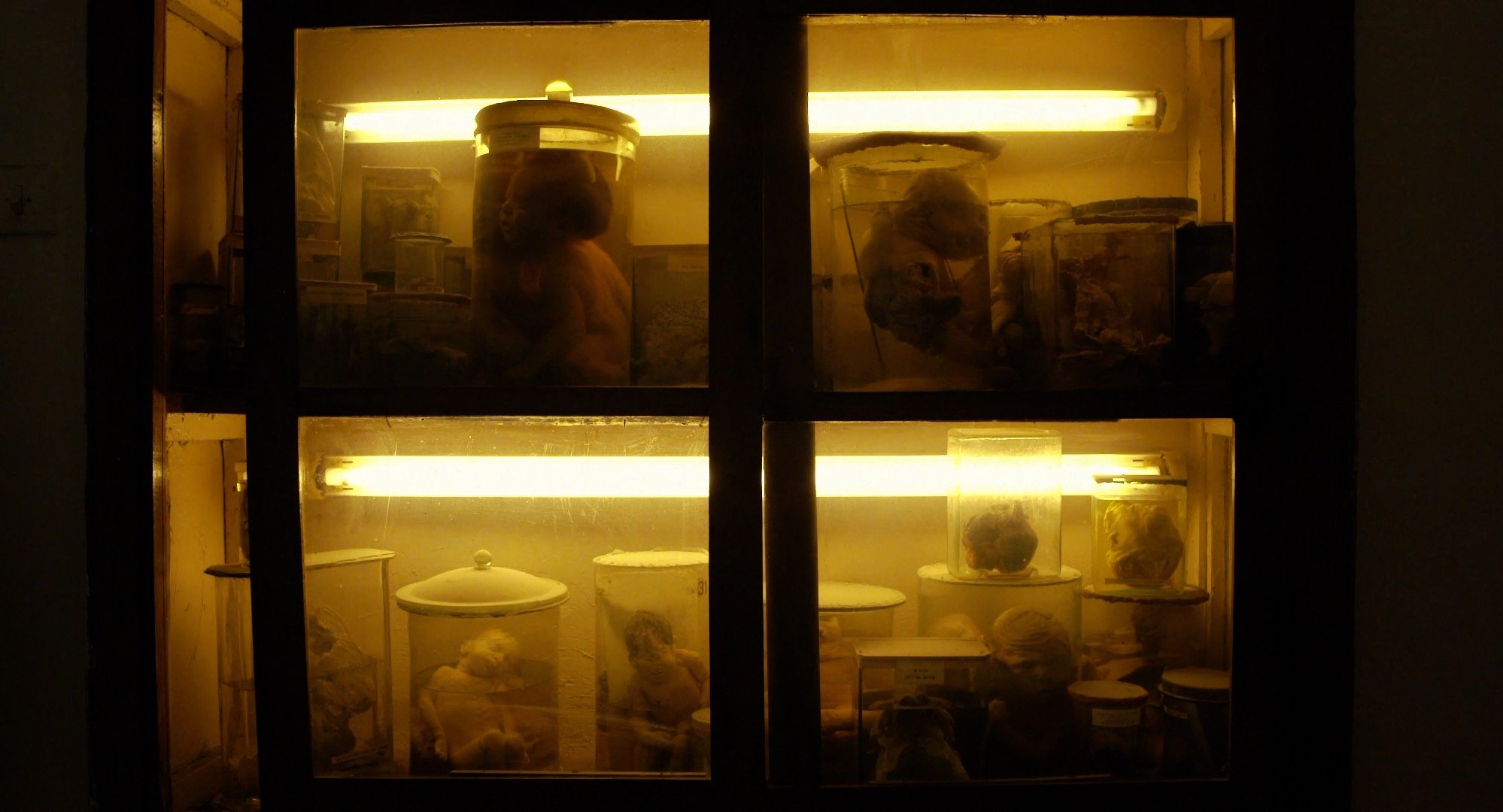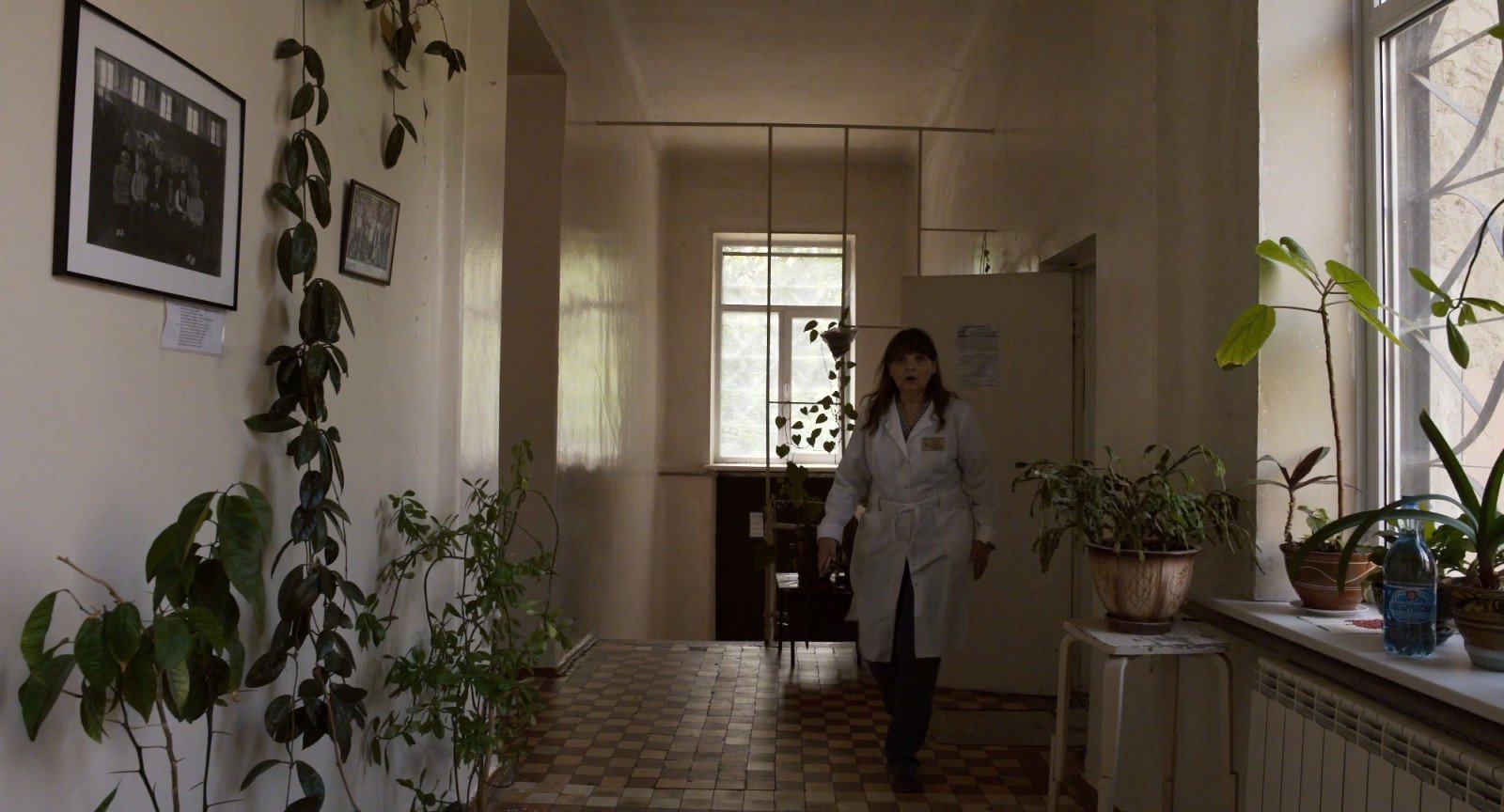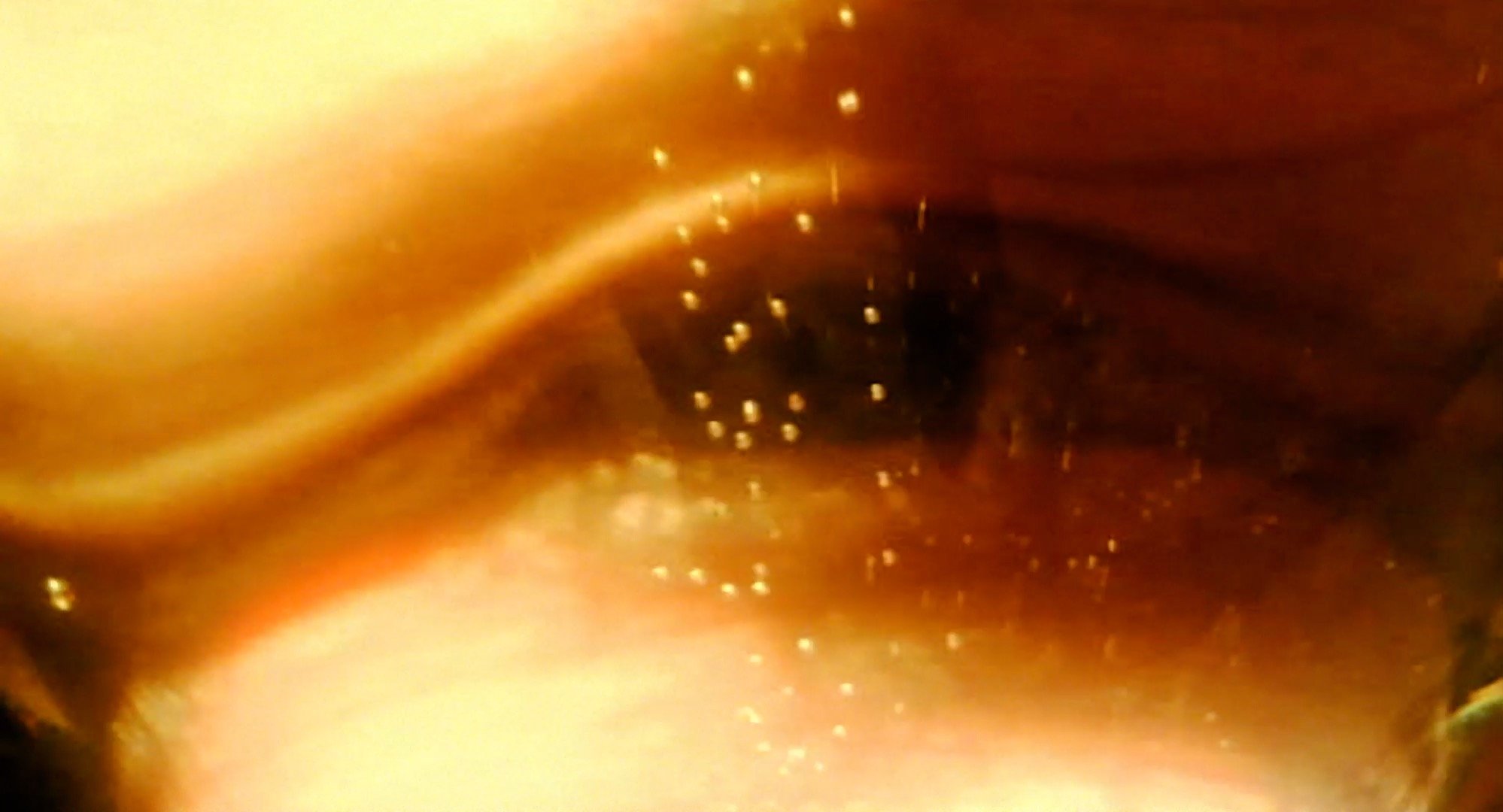Olga Chernych on A Picture to Remember. Looking for the shared experience by people from the post-Soviet space
A Picture to Remember is the debut feature documentary by Olga Chernykh. It is a personal collage film that analyses the past and the present on a personal and national level.
The film's main characters are Olga herself, her mother, who works in a Kyiv morgue, and her grandmother, who remains in occupied Donetsk in eastern Ukraine. It combines multiple cameras and archival footage to convey the fragility and importance of memory. First screened at the opening of IDFA last year, the film toured many festivals around the world including Ji.hlava. In our interview, we talk to Olga about the transformation of the initial idea with the beginning of full-scale invasion, the process of cinematically conveying the fragility of memory and the power of archival film.
It is known that initially the idea of your film was different. It was supposed to be a story about death, and eventually it turned out to be a complex film with multilayered themes. Could you please tell me about this process of transformation?
Back in 2019, I decided to film my mother's job in the morgue. In Particular, I had an idea to make a film about the moment in which we find ourselves trying not to be stuck in oblivion. Like, what is this moment of oblivion in our existence, where does it intersect, and does it have a border? How not to slip into this condition, and what helps us stay afloat?
Morgue is a very metaphorical place for this idea, so I thought I'd just walk around and film mother and her colleagues – that tended to be one line of the film. The other line was going to be about memory, because I suddenly found a big camera in the basement of the morgue, which was supposed to be a metaphor for oblivion. My father and I began to restore it, to make some photo shoots, which I filmed too. At the time, I thought that the personal story of me and my family would be a tiny element to metaphorically reinforce this line with the camera.
But then the full-scale invasion broke out.
Yes, and that's when I understood that it didn't work at all. In March 2022, I realised quite quickly that I had to rethink my approach completely. I can't hide from the history of my family, because it is very multilayered and it is a good example of the context we went through.
So I shifted my focus to the emotional component, which could reflect more on the tool of memory. How memory helps us but also hinders us in such difficult times. In fact, memory is an intangible thing that stays with people no matter what. Only dementia can take it away. But these deep, fragmented memories work differently, they cannot be taken away. On this reflection, I completely reworked the film, leaving the observation of the morgue and death in the background.
These types of participatory documentaries frequently resemble academic research, both on a personal and national level. How did you structure your work after the invasion, and what conditions did the invasion impose on you?
You know, during the first weeks of the full-scale invasion I realised that my family is going through the war for a second time. Until that moment, I had unconsciously alienated myself from this understanding, but since then I no longer have the right to avoid myself and, on the contrary, I have gained a certain justification in front of others to be able to talk about it. After all, this experience became more interpolated to the whole Ukrainian society. When I accepted this fact, it simplified my task as a director, that I had to make this kind of personal film, not a cautious reference of me inside it.
Also, by the beginning of the full-scale invasion, I was already quite distant from the material I shot in the morgue. It had become irrelevant to my emotional state. Maybe there is a film there, but it's completely different and it's not the right moment for it to appear. It didn't reflect what I wanted to do at that moment, so I started flipping through it. All the abstract, poetic scenes – appeared after the invasion began.
I read in one of your interviews that during early development you were forced to remove the morgue from the film. For me, the morgue and the death that your mother works with, serve as a kind of counterpoint to the personal, holding a bright hope against the oblivion you mentioned earlier.
When I presented the project at the pitchings, people didn't understand how we were going to combine all these multilayered elements. I think that visually, emotionally, the morgue stands so far apart that people couldn't imagine how it would look together.
However, when we reached a later stage and I showed a 20-minute excerpt at work in progress, there were no more questions. But in the overall progression, it was quite a challenge to defend it. Then Kasia, my editor, came along and said that it would be okay, we would find a place, because that would be a complete foolishness to throw it away.
What fascinates me most about your film is the presence of death that borders on heredity and its transmission through the feminine line of your family. How did you come up with this narrative?
I went through my mother, and she very organically moved into the new concept of the film as a leading element. I also realised that it would be essential to have my grandmother there, because she is the only person of the older generation who remembers my mother's line.
Dad's line is more structured. There's a scene in the film, where his family photo archive is shown and everything is so organised. You can read it and get acquainted with everything, but on my mother's side there is no such thing, and the only person who told me everything is my grandmother. Also, she is living in Donetsk, which is a connection with the past, our hometown.
It's very interesting, because in our Ukrainian documentary cinema, there are few films that combine Donbas with other territories of Ukraine in a single filmic space. There are purely films about Donetsk and Luhansk separately, yet in your film it is a single country, a reminder to people that these are our territories and our people who live there.
It just hurts so much. In 2014-2015 we lived through an experience of being seen as a newcomers, as people from clichéd "scary Donbas, uneducated Donbas, gangster Donbas". It was a feeling that people and our region in general was seen like not a fully part of Ukraine. For example, it was very hard to rent a flat, people were afraid to rent it out to others from Donbas. It was very difficult to get papers of your migration status etc. I mean, at the state level, for instance It was so shameful to be at the migration office, and I was very much affected. Unfortunately, I know dozens of similar stories from people from Donbas. And I believe we need to talk about it somehow, because it is a collective experience. So this our internal Ukrainian context was important for me. As well as the more global context of Ukraine on geopolitical map and in the history of the region.
Also in the film, I was trying to find universality through common stories and memories presented all across the post-Soviet countries, as we all lived through the same context. For people who have gone through certain historical events and experienced them in the same way, more or less. That is, imprisonment in the Gulag may be different, in fact it was the same experience of being in camp, in Gulag. It doesn't matter if you were in Vladivostok or in Sakhalin. Or if we are talking about the present time, if you are under occupation in Donbas or in Crimea – it's one big trauma because of the same repressive politics. So these are things that can be experienced simultaneously by people from different cities, different parts of the post-Soviet space.
You convey these chaotic elements with an experimental approach, crystallising them through different visuals and editing. This is interesting given that you worked for a long time as a commercial cinematographer and therefore you had a different visual code. But in the end, you reproduced your understanding of the phenomenon of memory, its destruction and attempts to understand it through the graininess and chaos of the whole image.
Yes, because it has to be grainy with a complex texture, made up of eclectic materials. I think this footage works for the story, because our memory is non-linear and consists of fragments.
With film, I wanted to reflect this process in the brain, when we try to remember an old event, and something flashes in front of our eyes, and immediately the picture changes to another random story, detached from the original one and in completely different colours. However, these constant jumps from different parts of the brain eventually create a picture of this story that we are trying to remember.
I think that these fragments could only be visually conveyed by an eclectic combination of archival material, photographs, CCTV cameras, super zoom or macro. That is, these are some different pieces, a jigsaw puzzle.
I was going to ask you what you were shooting on, as I know you had a whole set of different cameras.
I filmed on a digital camera, phone, VHS camera, handycam. I also filmed with an Aliexpress camera for seven bucks. Actually, the first scene was shot with it. It's just so small and it has a cool macro mode, but when you move away, everything turns into a total blur.
Was it because you couldn't find the right camera accommodating your budgets, or was that the point of the constant search for an image as a process of recovering memory through different means?
I think my background as a camerawoman helped me here. When I realised that I didn't have enough resources, I just started using my head and figuring things out. In 2022, I really didn't have the money to rent equipment, and I wasn't in Ukraine. Because it's cheaper at home, and I have friends there who can borrow equipment.
So I experimented. For example, I took my mum's phone, which turned out to have an x90 zoom. I wanted to take a picture of the clouds and was really blown away by how beautiful it was. This super low quality on a zoom makes such a magical abstraction, that I spent an hour just shooting clouds. That was exactly what I needed, because I wanted to depict abstraction, for which, ideally, I needed a super expensive telephoto lens.
And with the handycam, it was a conscious decision. I mean, I had already filmed with a handycam, and I understood that I needed the texture of home video. But not 8mm, more digital, but at the same time not ugly digital.
So this can match the aesthetics of photos from the 90s, from the VHS era.
I wanted them to have a visually pleasing texture. I bought this camera for 100 euros on a marketplace, and I don't even know how much footage I've shot with it. It's a very cheap, but great camera. A real discovery that I wouldn't have come to if I didn't have these limitations.
I wanted to talk with you about the very recent trend in Ukrainian documentaries that use archival footage. We saw this in Fragments of Ice by Maria Stoianova or A Bit of a Stranger by Svitlana Lishchynska. This tendency to turn to archives usually indicates a new stage of reflection in challenging times for identity, i.e. decolonisation processes here in particular. But what does this mean to you?
I don't think it's only about decolonisation processes. To me it is more about the nature of the current time, which is now resurfacing again in a forced way. The war and the events that are happening in our country cannot leave filmmakers aside.
This is a psychological trauma that we have to rethink and relive, and archives help us do that. Because we can find some answers in the past and rethink it through the prism of the present. We analyse how this invasion happened, what led to it. And so we ask ourselves a lot of existential questions. The search for answers to them usually takes place through something you are involved in. Also, not everyone can go and film current affairs. It's a different approach and a different type of thinking, and that's absolutely normal. After all, you can do something with what you have personal access to.
---
This article is a result of the project Media and documentary 2.0, supported by EEA and Norway Grants.






